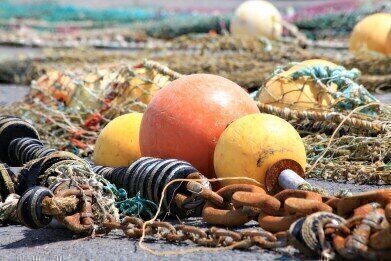Water/Wastewater
How Much of Our Water Is Covered by Fishing?
Mar 18 2018
A new study has uncovered the extent to which the Earth’s waters are being fished, providing the first comprehensive overview of global fishing activity. Using the inbuilt trackers which every vessel now carries, the team of researchers concluded that more than half of the world’s seas and oceans are now covered by commercial fishing operations.
A ground-breaking study
The fishing industry is a vast and sprawling entity, reaching to all corners of the globe and demanding rigorous regulation and monitoring for a variety of criteria. Despite this, until now very little data has been provided on the overall footprint of fisheries worldwide, given the difficult nature of the task.
This latest study, published in the journal Science, took a novel approach to the problem. Every industrial fishing vessel is now required to have an automatic identification system (AIS) installed onboard, which send outs a signal of its position, direction and velocity every few seconds. By analysing the satellite records of more than 22 billion of these messages between 2012 and 2016, the team were able to gain a better understanding of fishing activity than ever before.
They found that just over 55% of the Earth’s waters are currently being plundered by commercial fisheries, with the most concentrated efforts taking place, unsurprisingly, in known regions surrounding Africa, East Asia, Europe, the Pacific Northwest and South America. However, the open ocean also accounted for a significant percentage of the activity.
Good news or bad?
As the most comprehensive study on the subject to date, this latest research reveals that fishing activity covers almost all parts of the globe. While the 55% figure does sound fairly high, it’s far lower than previous estimates of 95%, giving some spectators cause for optimism. That is especially pertinent given the fact that marine fisheries peaked in the 1990s and that many countries (USA in particular) have had success in replenishing the fishing stocks they target.
However, the authors warn that their data is likely to be flawed. According to the AIS signals, there are several sizable regions of the open ocean which do not host any fishing activity at all, but the researchers are dubious over the reliability of this information. Given the heavy traffic in areas adjacent to these black-out zones, they believe that the real figure is probably closer to 73% and that connectivity issues are to blame for the discrepancy.
While that still represents an improvement on previous estimates, it’s clear that the fishing industry in its current guise still remains largely unsustainable. With marine life already suffering because of microplastic pollution, global warming and other factors caused by human activity, steps must be taken – such as creating marine reserves and installing monitoring technology on all boats – to ensure the longevity of not only the industry, but of the fish themselves.
Digital Edition
IET 34.2 March 2024
April 2024
Gas Detection - Biogas batch fermentation system for laboratory use with automatic gas analysis in real time Water/Wastewater - Upcycling sensors for sustainable nature management - Prist...
View all digital editions
Events
Apr 30 2024 Melbourne, Australia
Apr 30 2024 Birmingham, UK
May 03 2024 Seoul, South Korea
May 05 2024 Seville, Spain
May 06 2024 Minneapolis, MN, USA


















